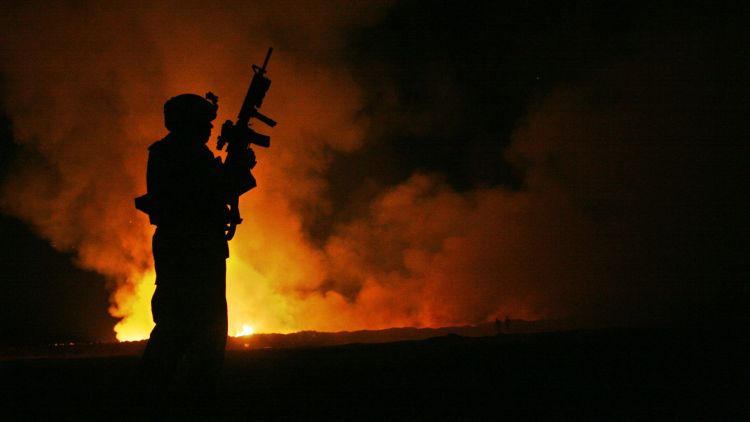On August 1, the Department of Veterans Affairs (VA) unveiled a revamped Airborne Hazards and Open Burn Pit Registry (AHOBPR 2.0) designed to accelerate research into the health consequences faced by veterans exposed to toxic fumes during their military service.
A Redesigned Registry for a Healthier Veteran Community
Originally established in 2014 at the behest of Congress, the registry aims to gather data that will inform the development of new treatments, improve predictive medicine, and ensure appropriate care for those affected.
However, feedback from veterans indicated that the original registry was overly burdensome to participate in.
The redesigned registry addresses these concerns by significantly expanding eligibility criteria and simplifying the enrollment process.
Millions more veterans and service members are now automatically included based on their Department of Defense (DoD) records, with a clear option to opt out if desired.
“This tool is a significant improvement in making data available in a way that better serves all those who were exposed to burn pits and other hazards,” said Dr. Lester Martinez-Lopez, assistant secretary of defense for health affairs, cited by the DoD. “Being part of the registry is a way for individuals to help and improve our understanding of the challenges faced by service members and veterans affected by these exposures,” he added.
The registry will collect information on deployment locations, demographics, and other relevant factors.
This data will be used to identify patterns of illness, develop new treatments, and inform policy decisions, such as expanding the list of presumptive conditions linked to burn pit exposure.
Firefighters put out an aircraft fire during live fire training in April 2016. (DVIDS)
Eligibility and Enrollment in AHOBPR 2.0
The VA has significantly simplified the process of participating in the AHOBPR 2.0.
Here’s a breakdown of what you need to know:
Who is eligible?
The AHOBPR 2.0, as mentioned, automatically enrolls veterans and service members (living or deceased) based on DoD records.
This includes those who served in specific operations and campaigns like Desert Shield and Desert Storm, Iraqi Freedom, Enduring Freedom, and New Dawn.
Additionally, it encompasses service members stationed in certain locations between August 2, 1990, and August 31, 2021.
These locations include:
Iraq, Afghanistan, Kuwait, Saudi Arabia, Bahrain, Djibouti
Surrounding waters of the Persian Gulf, Arabian Sea, Red Sea, Gulf of Aden, and Gulf of Oman
Syria, Uzbekistan, and Egypt (service after August 2, 1990)
Somalia (service after August 2, 1990)
Southwest Asia Theater of Operations (any time after August 2, 1990)
Afghanistan, Djibouti, Jordan, Lebanon, Syria, Uzbekistan, or Yemen (service after September 11, 2001)
Associated airspaces of the listed countries
Do I need to have documented exposure?
No prior documented exposure to specific airborne hazards or related health concerns is necessary to participate.
The VA recognizes our understanding of toxic exposures is constantly evolving.
Even if you haven’t experienced any known exposures, your participation may help identify new patterns and trends in the future.
How can I confirm my enrollment?
Veterans can check their enrollment status by contacting their local Environmental Health Coordinator.
Active-duty service members can verify theirs at https://www.va.gov/.
Soldiers conduct atmospheric tests for Chemical, Biological, Radiological, and Nuclear (CBRN) hazards. (DVIDS)
What if I’m not listed but deployed to an eligible area?
Data discrepancies sometimes occur due to large data transfers or classified missions.
If you deployed to an eligible location and your name isn’t listed, you can request a manual review by submitting a request via the VA website.
Briefly explain your situation, including your dates of service and deployment information related to the eligibility criteria.
What about previous enrollment?
Veterans previously enrolled in the old registry are automatically enrolled in AHOBPR 2.0. No further action is needed.
Can I opt out?
Yes. As stated earlier, you can opt-out. Participation is entirely voluntary and has no impact on VA healthcare or benefits.
You can opt out through this online form here.
And if you change your mind, you can opt back in. Absolutely! Veterans and service members who initially opted out can rejoin by submitting a request here.
A soldier uses a bulldozer to manage trash at a burn pit. (DoD)
Data for a Better Future
While participation in the registry does not directly impact individual care or benefits, the information collected will be invaluable in guiding future policy decisions, such as the designation of presumptive conditions.
Veterans seeking immediate healthcare or benefits related to toxic exposures are encouraged to visit VA.gov/PACT or call 1-800-698-2411.
The VA is optimistic that the AHOBPR 2.0 will be a critical tool in improving the lives of veterans affected by burn pit exposure.
—
Disclaimer: SOFREP utilizes AI for image generation and article research. Occasionally, it’s like handing a chimpanzee the keys to your liquor cabinet. It’s not always perfect and if a mistake is made, we own up to it full stop. In a world where information comes at us in tidal waves, it is an important tool that helps us sift through the brass for live rounds.



